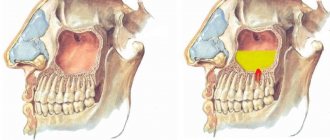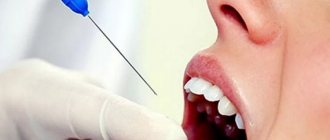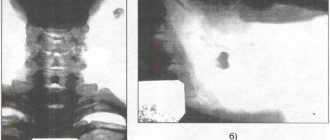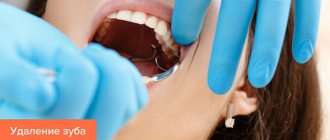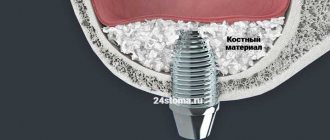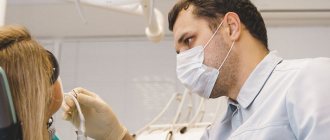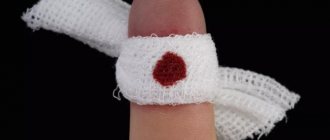Feelings after surgery Condition in the first hours During the week Duration of the period Accelerated rehabilitation Doctor's recommendations What not to do Possible complications How to avoid consequences Frequently asked questions
Sinus lift is an operation on the upper jaw in the area of the maxillary sinuses. It is performed to increase bone volume before installing implants. The operation is non-traumatic, performed by an experienced doctor using minimally invasive protocols. But as after any surgical intervention associated with the need to injure soft and bone tissues, the patient needs a rehabilitation period to recover.
Feelings immediately after a sinus lift
Surgeries in our Center are performed under sedation (medicated sleep), the patient does not feel anything during the operation and does not remember what happens after waking up. The first few hours may be accompanied by several unpleasant sensations. Acceptable:
- feeling slightly tired;
- slight lethargy for 30-40 minutes;
- a feeling of heaviness or fullness when tilting the head forward;
- “tightness” of the oral mucosa;
- dry lips
We do not use general anesthesia
Recovery from sedation is easy and is not accompanied by nausea, vomiting or dizziness. Ultra-short-acting drugs are eliminated from the body within an hour.
Levin Dmitry Valerievich
Founder and Chief Doctor of the Center
Do not expect severe pain after the operation; during the operation, the anesthesiologist has already administered all the necessary painkillers, a decongestant complex and a prophylactic dose of antibiotic.
Immediately after the operation, you will receive a package of medications for home use. All drugs are certified , this eliminates the purchase of counterfeit products. You don’t have to run around pharmacies after surgery in search of the necessary medications. The package also contains instructions for the use of medications, prescriptions and recommendations of the attending physician.
The appointment sheet from the anesthesiologist indicates all acceptable conditions of the postoperative period and his emergency contact number. Don't hesitate to call and ask a question.
Features of the postoperative period
Sinus lifting in dentistry is the most common and well-established osteoplastic surgery. You shouldn't be afraid of her at all. But it has certain features, and after it is performed, the patient must especially carefully follow the recommendations of the implantologist.
- The surgical area is separated from the nasal cavity by the thin mucous membrane of the maxillary sinus. If the integrity of the shell is compromised, microorganisms that can infect the spacer will enter the surgical area.
- In the sinus itself after the intervention, stagnation develops, bleeding occurs, the mucous membrane swells - that is, an ideal environment is created for the accelerated proliferation of pathogenic microflora.
Therefore, after surgery, you have to care not only for the oral cavity, but also for the nasal cavity. It is also necessary to take care of the integrity of the mucous membrane.
Condition in the first hours after surgery
Our Center uses minimally invasive surgical protocols that do not cause severe postoperative consequences. We do not support punitive medicine and do not use hammers, chisels or drills. Operations are performed using ultrasound technology with minimal tissue trauma and minor inconvenience after surgery. But still, on the day after the operation, unpleasant sensations are possible; to minimize them, use the medications from the package.
Pain
Painful sensations occur in the first hours after a sinus lift, as after any surgical procedure. They are especially unpleasant in the first 12 hours, when the effect of the anesthetic wears off. Anti-inflammatory and painkillers prescribed by your doctor will help relieve pain. They are given to you in a package with medications.
Bleeding
As after any intervention with tissue trauma, bleeding is common in the first hours after a sinus lift. It can be stopped by holding very cold water in the mouth for a few minutes or pressing ice or ISAPAC from the box of postoperative medications to the cheek on the side of the operation. Special medications prescribed by your doctor can also stop bleeding after a sinus lift.
If aching pain appears earlier than 4 hours after surgery, bleeding, or pain when swallowing, you must urgently contact the 24-hour support service at the phone number indicated on your postoperative advice card.
What other recommendations need to be followed?
- Taking antibiotics as prescribed by a doctor.
- Avoid physical activity for the first 2-3 weeks.
- Do not smoke for at least 5 days after surgery (nicotine interferes with tissue healing).
- If you have a removable denture, do not wear it for at least 2 days after surgery.
- Do not drink through a straw, do not forcefully blow your nose, or puff out your cheeks until the wound in your mouth heals.
- Avoid visiting saunas, steam baths and swimming pools for a month.
- Avoid flights for 3-4 weeks.
How you feel during the week after surgery
Starting from the next day after surgery, the discomfort should decrease and disappear by the end of the week.
Painful sensations
Pain in the operated area will appear the next day. This condition lasts 1-3 days and is considered unpleasant, but expected and normal. When following the recommendations from your postoperative period cards, there will be no unpleasant surprises. Ketorol, Nise or Ketanov are taken two tablets for pain and are in a box with postoperative medications and antibiotics given to you at home. Take medications according to the regimen on the prescription sheet.
Edema
Swelling is a normal reaction of the body to any surgical intervention due to the flow of lymph to the operated area. It is most pronounced after sinus lift on the third day. It occurs more often in women and depends on the individual characteristics of the body. To avoid the development of swelling, apply ice to the cheek on the operated side on the first day after surgery for 5-10 minutes with half-hour breaks.
Temperature
An increase in temperature to 37.5 degrees is considered normal during the first 3-5 days. This is a normal physiological reaction of the body to changes. The immune system is activated to protect injured tissue from infection. Take the combined anti-inflammatory and analgesic drugs from the package, they prevent the development of complications and fever. The condition may last for a maximum of 10 days. If the readings do not decrease, you should consult your doctor.
Planning the operation
An important step in preparing for a sinus lift is planning the surgical procedure. In order to adapt his actions as accurately as possible to the individual characteristics of a particular patient, the doctor uses the results of all possible instrumental examination methods, for example, non-traumatic fiberoptic methods of ENT diagnostics.
Planning the operation includes choosing the optimal surgical approach, which will allow you to fill with bone exactly the area where the implant will be installed. Also, in the process of adapting a sinus lift to a specific patient, those individual data about his health that may affect the results of the surgical intervention are taken into account. The doctor’s task is to predict the results of therapy as clearly as possible and achieve an impeccable result.
How many days does the period of inconvenience last?
Most often, postoperative wounds and sutures in the oral cavity cause inconvenience to patients. The period of gum healing depends on the extent of the intervention and the type of surgery.
- After an open sinus lift, restoration of soft tissues takes three days (the time of the wound process in the acute stage). Then the internal and external swelling begins to decrease and after a couple of weeks completely disappears. The gums finally heal within a week.
- A closed technique with microsurgical access to the sinus through a bed for implant installation sometimes makes the healing process quick and comfortable for the patient, but unpredictable due to the surgeon working blindly. Sometimes the rehabilitation period is longer than after an open sinus lift.
Typically, sutures after a sinus lift are removed after a maximum of fourteen days, depending on the extent of the intervention. The gum grows together during this period, then gradually takes on a natural shape.
The formation of bone tissue occurs in a few months - we will determine this period using a control computed tomogram, select the best period of time and invite you for implantation.
Indications and contraindications
Sinus lifting is performed for patients who have bone deficiency in the area of missing chewing teeth on the lateral surface of the upper jaw, that is, under the bottom of the sinus. The open form of surgical intervention is performed when there is a significant deficiency of the alveolar process, that is, the patient has less than 4-5 mm of his own height, or several teeth are missing.
If a minor area needs to be restored, then an open sinus lift is not needed; a closed sinus lift is performed. Postoperative pain does not depend on the type of sinus lift, but on the implementation of postoperative recommendations.
Preparation for a sinus lift is largely determined by the presence of contraindications to the operation. Most of them are relative and are corrected at the preoperative stage. RELATIVE contraindications include the following patient characteristics:
- Chronic somatic pathologies in a decompensated state;
- Metabolic problems that lead to impaired tissue regeneration;
- Decreased immunity, including HIV and other serious immunodeficiencies;
- Carrying out chemotherapy, as well as the presence of a malignant tumor of any location;
- Heart failure, especially after acute ischemic processes (heart attack, stroke);
- Poor blood clotting;
- Mental pathologies;
- Alcoholism and smoking;
- Pregnancy and lactation;
- Inflammatory processes in the oral cavity or maxillary sinus;
- The presence of cysts or polyps in the maxillary sinus;
- Poor personal oral hygiene, presence of caries.
Usually the doctor takes a sober and objective approach to the question of the advisability of immediate sinus lifting. If at this moment the patient has any conditions or risks, corrective treatment is carried out to relieve inflammation. Some of the conditions are quickly eliminated, while others cannot be perfectly corrected. The patient should be notified of any adverse outcomes that may occur if the physician agrees to perform such bone grafting.
Usually, in our Center, auxiliary specialists of the First Medical Department provide patients with full preparation for sinus lift surgery.
Accelerated rehabilitation complex
For patients who want to quickly get rid of swelling and micro-spasms of muscles after surgery, our Center provides an accelerated rehabilitation complex.
- Bioreparation Injections of lymphatic drainage drugs improve lymph flow and blood circulation, thereby reducing swelling and reducing hematomas. Multicomponent preparations include a complex of biostimulants, peptides, microelements and vitamins. They have a wound healing and anti-inflammatory effect.
- Plasma therapy PRP therapy involves injections of platelet-rich plasma obtained from the patient's blood. The functioning of the immune system increases, the body's defenses are strengthened. Swelling goes away, bruises resolve, wounds heal faster.
- Microcurrent therapy Physiotherapy with microcurrents involves applying weak discharges to the skin of the face. Cell activity improves, lymph and blood flow normalizes. As a result, swelling decreases and hematomas lighten. Due to the stimulating effect on the muscles, pain when opening the mouth and chewing goes away.
If you have an event planned, the rehabilitation complex will help you look presentable on the day you go to the clinic
It is better to plan any operations in advance in order to spend the rehabilitation period at home in peace. But anything can happen; in case of urgent need, you can return to a full life on the day of visiting our Center. The cosmetologist will create an individual program especially for you. He will select the optimal number and course of restorative procedures depending on the scale of the operation and the degree of aesthetic and physiological discomfort.
Levin Dmitry Valerievich
Founder and Chief Doctor of the Center
Undeniable advantages and controversial disadvantages of sinus lift
Thanks to sinus lifting, patients with a lack of bone tissue or its atrophy after a long absence of a dental unit have the opportunity to carry out full and high-quality dental implantation, restoring the former beauty of the smile and the health of the oral cavity, and dentures installed on implants can look much better aesthetically .
Bone grafting in Moscow is a fairly common procedure that has been successfully performed by doctors for more than thirty years; technologies and methods of performing the procedure are constantly being improved, and new diagnostic methods are emerging. Dental companies that produce bone grafting materials and instruments for their implantation have a network of representative offices all over the world, which allows doctors to have the opportunity to receive advice from the manufacturer and apply the best treatment methods.
Aesthetically incorrect jaw shape due to lack of bone tissue
Despite the obvious advantages, sinus lifting has a number of disadvantages, which are mainly associated with improper implementation of the procedure, violation of technology, superficial diagnosis, or failure to follow doctor’s recommendations. For example, if the paranasal sinuses are insufficiently examined, after a closed sinus lift, the installed implant may sink into them, and then the operation will have to be repeated. Damage to the maxillary sinuses can lead to chronic rhinitis or other inflammatory processes. However, if an experienced specialist gets down to business, these complications do not threaten the patient, the procedure is fine-tuned to the smallest detail and experienced specialists have mastered it to perfection.
The main disadvantage of the procedure is the healing period, because the open bone grafting method is quite traumatic and is associated with multiple incisions; after the operation, the patient is plagued by inconveniences, such as swelling after sinus lift, bruising, and pain. During a closed bone grafting procedure followed by implantation, the patient must strictly ensure that a strong chewing load is not placed on the implant. Some people also consider the disadvantages of the procedure to be its rather high cost, however, the high cost of sinus lifting should be accepted as a fact, because the operation is not only technically complex, but it also requires a highly qualified doctor, special equipment and consumables. , which, alas, medical equipment manufacturers do not provide for free.
Doctor's recommendations
During the recovery period after sinus lift, the first 8-10 days should follow the recommendations to prevent complications and speed up the healing process:
- Treat the area around the wound on the gum with a cotton swab or cotton swab dipped in an antiseptic solution
- Brush your teeth only from the second day, using a soft brush and without touching the surgical area
- Do not bite with teeth that have undergone surgery.
- Limit food to food at a comfortable temperature that does not require heavy chewing (should be finely chopped or semi-liquid)
- Remove fluid from the nose with a cotton swab, do not blow your nose
You will find detailed instructions with rules of conduct in the post-operative medicine package.
Features of anesthesia
The preparatory stage includes the choice of anesthesia method. To do this, the patient consults with our staff anesthesiologists. There are two main methods of anesthesia that are used in our clinic:
- Local. The area of muscle and nervous system is switched off by injecting medications directly into the area that will be operated on.
- Combined. The patient is switched off consciousness with an ultra-short-acting hypnotic drug with a simultaneous decrease in sensitivity and relaxation of muscle structures. It is extremely necessary for patients with an anxious type of consciousness.
Additionally, sedative medications are used in dentistry to reduce the level of anxiety in people who are afraid of surgical interventions.
In the vast majority of cases, sinus lifting involves the use of combined or local anesthesia. The problem with local anesthesia and this method is the recent increase in high allergenicity to various drugs, which is why the anesthesiologist should do a preliminary microprovocative test.
Sedation or sleep therapy is an excellent choice, and this anesthesia does not require special preparation - the patient refuses breakfast on the day of surgery and eats only a light meal the day before. No blood tests are required.
Combo anesthesia is carried out if there is an allergy to all local anesthetic drugs or for a number of other medical indications. Patients are also free to choose to completely switch off consciousness during the operation, but the doctor will agree to it only if the person’s health allows them to tolerate such drugs. Most often, short-term inhalation or injection medications are used, so the patient quickly recovers from sleep and can leave the dental clinic on his own, without the help of relatives. However, you should not drive immediately; this must be taken into account when preparing for the operation.
After sedation, our administrators will take you to the postoperative room, give you hot tea, and after 15-30 minutes you will be able to leave in a personal car or on your own.
Important! Combined anesthesia and anesthesia are different technologies for different purposes; in our Center, classical anesthesia is not performed, only comfortable options for sedation.
What not to do after sinus lift surgery
For about two weeks (in some situations up to a month), a number of restrictions should be observed:
- Rinsing after surgery is strictly prohibited!
- Avoid actively blowing your nose, sneezing or coughing with your mouth open.
- It is forbidden to drink through a straw
- Avoid catching colds, and at the first symptoms of a runny nose, consult a doctor immediately
- Avoid air travel while you recover
- Limit physical activity and going to the gym
- Avoid stressful situations
- Do not use the sauna or swimming pool
- Avoid hot and spicy foods
Failure to comply with restrictions may cause unpredictable consequences.
Read more here - Limitations after sinus lift and bone grafting
If you follow all the recommendations, then within 2 weeks after the procedure the body returns to normal, and the patient returns to his usual lifestyle.
The concept of sinus lift and the scope of the procedure
Sinus lifting (or, scientifically, subantral augmentation) is an implantological operation, the purpose of which is to increase the thickness of the bone under the lower wall of the maxillary sinus.
Bone augmentation during dental implantation
The structure of the alveolar ridge is significantly different from the structure of the lower jaw, the maxillary bone is more porous, and above the upper lateral teeth is the maxillary sinus, the largest paranasal sinus, which lightens the mass of the skull, helps warm the inhaled air, and resonates the human voice. In some patients, the jaw bone is so thin that the tops of the tooth roots are located directly in the cavity of the maxillary sinus; this is not a deviation, but rather an anatomical feature of the jaw structure. In such clinical cases, when a tooth is lost or removed through the resulting hole, damage to the mucous membrane and infection of the maxillary sinus may occur. To prevent this, a sinus lift of the teeth is performed.
Incorrect and correct implantation after sinus lift
In other patients, the roots of the tooth do not protrude beyond the alveolar ridge, but still, dental implantation in the upper jaw will be effective and safe when the thickness of the bone tissue under the maxillary sinus is at least 10 mm, then the implant will not disrupt the integrity of the mucous membrane inside the paranasal sinus. Moreover, after the removal or loss of a tooth, a natural and irreversible process occurs over time - bone tissue atrophy. The bone is no longer exposed to stress in the toothless area, resulting in its necrosis, which can lead to a change in the position of individual teeth, displacement of the dentition, changes in facial contours and distortion of facial expressions. In these cases, bone grafting during dental implantation is simply necessary.
Possible complications
If alarming symptoms are observed during the rehabilitation period and after it, it is better to play it safe and immediately consult your doctor. The reason should be:
- persistent pain;
- heat;
- constant nasal discharge;
- strange organic smell.
Such conditions indicate complications. It is possible to determine what went wrong and for what reason only after examination and diagnosis.
Read more here - Complications after sinus lift and bone grafting
The 24-hour helpline number is located on the post-op advice card in the antibiotic and painkiller packet.
Common Complications
Insufficient preparation for a sinus lift can cause many adverse outcomes. This means both preparation on the part of the patient and planning of the operation by the dentist. In addition, complications can be caused by medical errors during surgery or insufficient compliance with the regimen and recommendations during postoperative rehabilitation.
If a sinus lift is performed, the following conditions may develop:
- Bleeding from the operated area. The problem is caused by insufficient examination of the patient, during which blood clotting pathology was not identified, as well as pressure surges. To relieve the condition, hemostatic drugs of local and systemic action are used. In our clinic, the anesthesiologist carefully and delicately adjusts the blood pressure numbers during the operation and postoperative period.
- Wound infection. By refusing to take antibiotics, the patient risks the success of the operation, and immunodeficiency and poor personal oral hygiene cause the proliferation of pathogenic microorganisms and the inflammatory process. A person is worried about: increasing pain, progressive swelling, increased temperature, bad breath, discharge from the operated area. If you have these symptoms, you should immediately contact your dentist. In our clinic, the patient is given a postoperative case with medications and instructions for use, which eliminates problems.
- Seams coming apart. The problem may be due to poor application or improper cleansing of the wound during the rehabilitation period, that is, mechanical damage. Most often in patients who tear off stitches with a toothbrush.
- Perforation of the maxillary sinus. When treated in specialized clinics by an experienced doctor, this is impossible in principle . Modern methods of sinus lifting, as well as preliminary clear planning of surgical intervention, make it possible to avoid this complication. Some perforations are so minor that they do not require any action, while in other situations the operation must be stopped.
Sinus lifting may involve the simultaneous installation of implants, which can also be accompanied by a number of adverse outcomes. Most often, problems arise with fixing an artificial root: when the doctor overestimates his own capabilities and the capabilities of the bone tissue, the implant is placed in weak areas of the bone, then it can become loose, fall inward, or fall out along with part of the bone tissue. The surgeon must first assess the risk of complications and give preference to two-stage treatment if there is a detected area of compromised bone.
How to avoid consequences
For our part, we took all measures to avoid complications:
- Diagnosis is carried out on a modern SIRONA computed tomograph with GALILEOS software in ENT mode . It allows you to evaluate the anatomical features of the maxillary bone, the location and condition of the maxillary sinuses.
- Before a sinus lift, we must perform oral sanitation and professional hygiene to avoid infection in the surgical area.
- We perform operations using gentle protocols— ultrasonic access protocol and Lift-Control technology ensure the most gentle operation possible.
- We use only biocompatible materials and BMP bone growth stimulators without the risk of rejection and allergies.
On your part, it is enough to follow the recommendations, then the risk of unpleasant consequences will be minimal.
Contraindications for surgery
Bone grafting during implantation is a fairly common procedure in dentistry; there is very little that is impossible for progressive medicine, but sinus lifting still has a number of contraindications. Some restrictions can be eliminated, while other contraindications are categorical. The sinus lift procedure is prohibited in the following cases:
- The patient has HIV infection, aggravated to the stage of affected immunodeficiency (AIDS). Before undergoing bone grafting, the patient will need to normalize their viral load and CD4 counts by taking antiretroviral therapy.
- The patient is diagnosed with acute rhinitis, sinusitis or the presence of polyps. These diseases can be easily treated with therapeutic methods or simple surgery, because modern ENT surgery also works wonders. It is also not recommended to carry out the procedure during the rehabilitation period after other operations of the nasal cavity and sinuses - reposition, correction of the nasal septum, removal of a cyst, etc.
- Cancer tumors in the patient’s body and the rehabilitation period after radiation and chemotherapy.
- Poor blood clotting (hemophilia) was a disease of many European monarchs of yesteryear.
- Diseases of the cardiovascular system, as well as chronic drug addiction and alcoholism.
- Anatomical features, for example, the location of the maxillary sinuses too close to each other, or current exacerbations of the patient’s chronic diseases.
